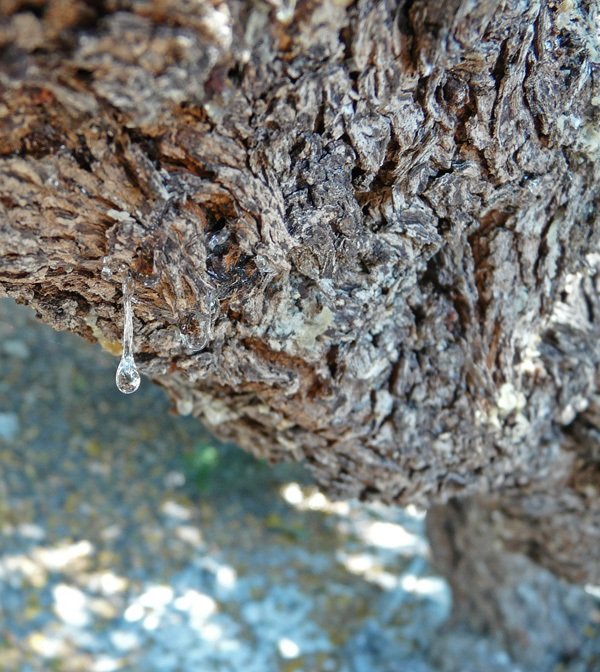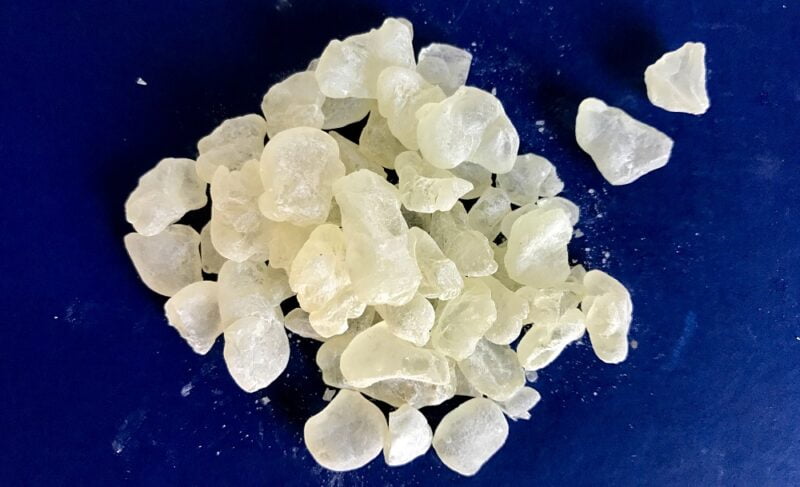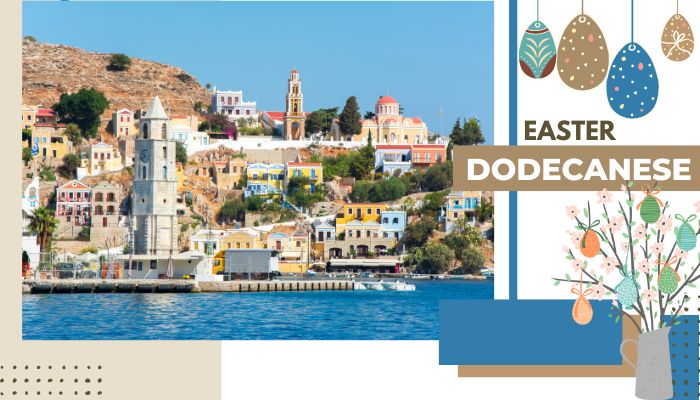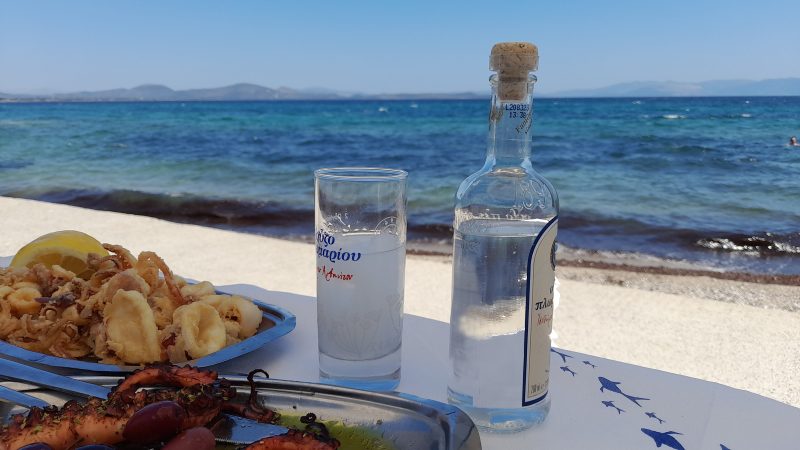The mastic – or mastiha in Greek – was born on the island of Chios. He has traveled the world. It is a natural product that has been widely adopted and used in different ways by the peoples of the Eastern Mediterranean. A unique product which still today arouses the interest of the international scientific community and is renowned for its many virtues.
The putty tree
Mastic is an aromatic and resinous substance that oozes from the trunk and main branches of the mastic tree(Pistacia Lentiscus). It is an evergreen shrub of two or three meters in height with a very fast development. It starts producing putty in its fifth year and has a lifespan of 100 years.
The mastic tree grows in other regions, especially in the Mediterranean basin. Some of these trees secrete a resin that, at first glance, resembles the mastiha of Chios. But in reality, it has neither its taste nor its aroma nor any of its beneficial characteristics. For this reason, the mastiha of Chios has received the AOC product label since 1997. There are mastic trees all over the island of Chios. But mastic is only harvested in the south, in the Mastichochoria (mastic villages), where the climate is particularly hot and dry.

Mastic: a harvest that is still done in the traditional way
The production of mastiha is a family occupation . It requires a laborious work and a particular care throughout the year. To extract the mastic, the trunk and branches are cut in summer at different places with sharp tools. From these wounds, a yellowish resin flows in the form of a tear. These drops solidify in contact with the air after 15-20 days, taking on a crystalline form. The process of incision of the lentisks is called ” Kentima”. This which in Greek can be translated as “embroidery, stinging”.The tears dry and coagulate on the trunks and branches or even on the ground, giving the fragrant mastic. Legend has it that the mastic trees began to weep when they saw the martyrdom of St. Isidore tortured for his belief in Christianity.
The resin is collected in mid-September. It is cleaned by hand, piece by piece, for delivery to the Cooperative. The Chios Mastic Growers’ Association, established in 1938, has the exclusive right to grow mastic until today. It develops its trade, exploits the putty and protects the product as well as the producers.
Putty: a little history
Sinceancient times, the mastiha of Chios has been recognized for its particular aroma and its therapeutic qualities. It is known to relieve stomach pains. It is considered the first natural chewing gum in the ancient world. The women of Rome and Constantinople used mastic wood as a toothpick, as a whitener, a habit that lasted until the Middle Ages.
In the Byzantine periodThe mastic was one of the few luxury products that could be exported from Constantinople. It brought to the imperial coffers of the Governor of the island 120.000 gold coins.The passage of the Genoese to Chios (1346-1566 A.D.) helped to organize the mastic trade by opening the western and eastern markets. During the Ottoman occupation from 1566 onwards, the mastic villages, which were self-managed, experienced a euphoric period. The first quality mastic was sent to Constantinople. The main beneficiaries were the 300 women of the sultan’s harem who chewed it to keep their breath fresh…
Where to buy putty?
- On the island of Chios, of course! You will find it everywhere, it is the specialty of the island.
- In Athens, in the Mastihashop store (6 Panepistimiou Avenue, metro Syntagma or Panepistimiou). As well as in delicatessens, supermarkets and at the airport.)
This article was written by Dina Sintzanaki-Déprés
Our other articles on Chios :




